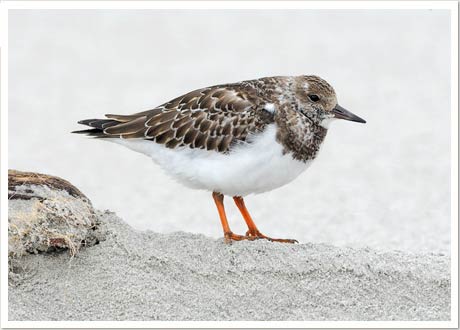|
| Ruddy Turnstone |
PHOTO: 1 2 |
 |
|
 |
 |
| Ruddy Turnstones are fairly common during migration, both northbound in May, and southbound from July to September. Like Red Knots and Sanderlings, Ruddy Turnstones migrate long distances to and from their breeding grounds in the high Arctic. Plymouth Beach is a critical feeding area for turnstones, which use their upturned beaks to turn over stones and dig holes for tiny, invertebrate prey. Ruddy Turnstones are most common on the high sandy ocean beach and in the soft sand of the bay side. |
|
|